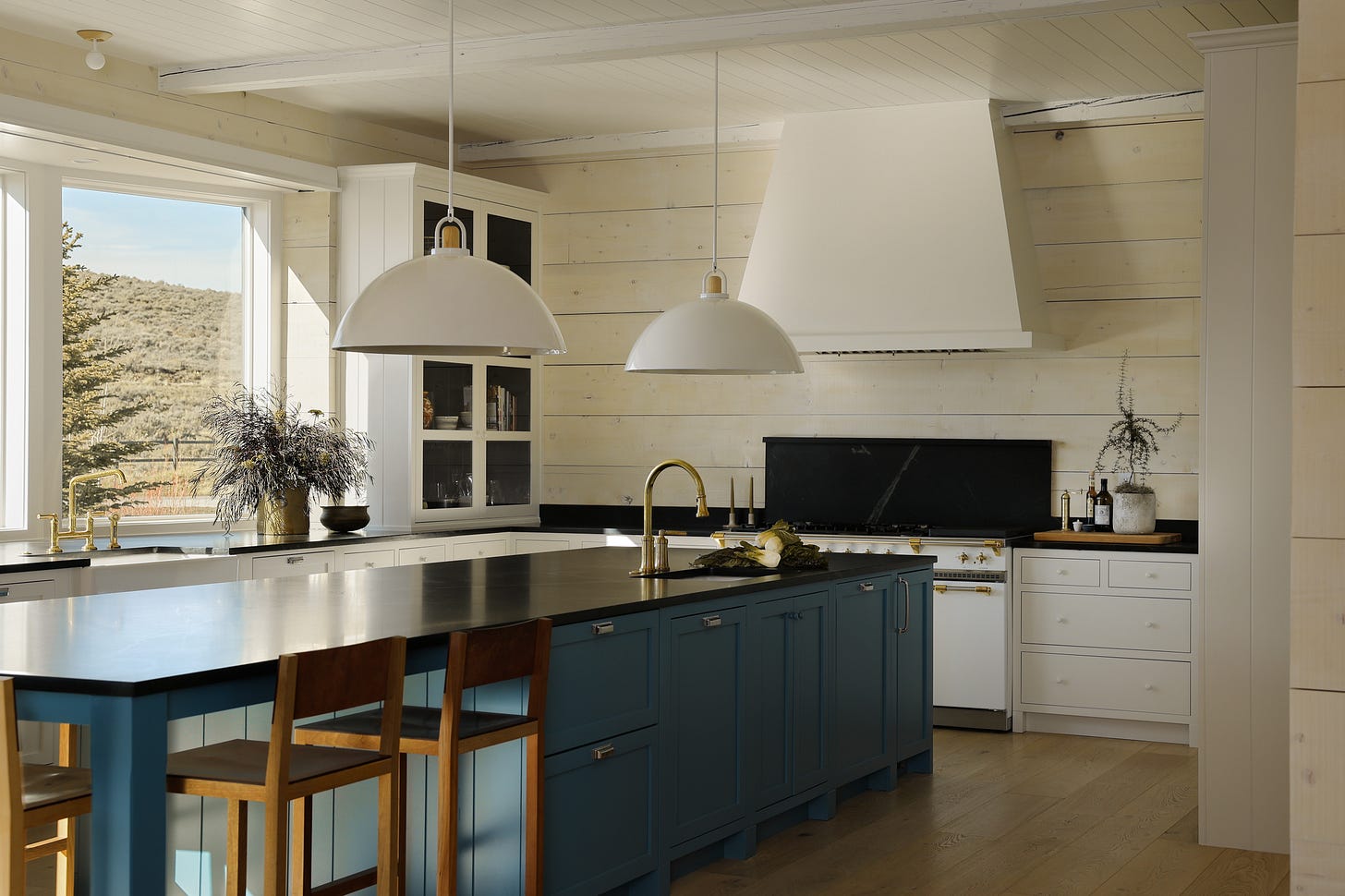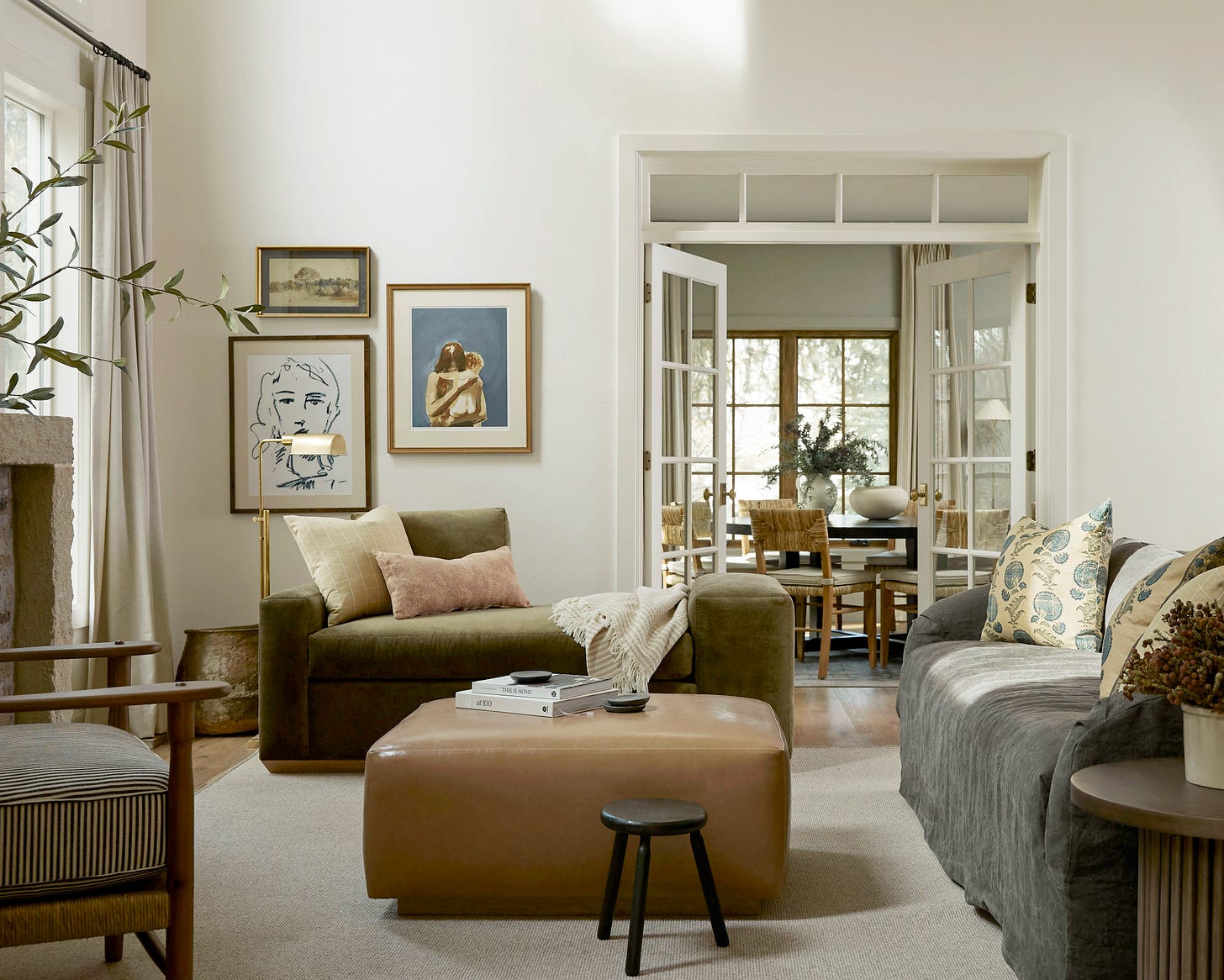What is fear based design?
Fear based design is making design choices out of fear rather than desire.
Two of the most common fears we see that drive design decisions are the fear of making a mistake and the fear of not having enough.
Keep reading for a few examples and for our tips on how to avoid fear based design in your own life.
Example of fear based design…
You're designing your living room and want a cozy sitting area in front of the fireplace. You start imagining every possible scenario that could happen in that room.
You think to yourself... what if we have 20 people over, where will everyone sit? This thought might cause you to design a more open space with lots of seating.
In reality you may only have 2-3 people sitting in that space daily. You wanted it to be a cozy space but because fear got in the way, you now are left with a room that serves your fear rather than your desire.
Tips on how to avoid this...
#1 Avoid a scarcity mindset
Scarcity mindset makes people go bigger than they need.
Ex. of scarcity mindset: What if I don't have enough space? What if my closets aren't big enough or I don't have enough cabinetry in my kitchen?
Avoid decisions that are based on “what if”. Careful planning will ensure you have what you need and eliminate unnecessary worry.
#2 Design your space for you and how you live daily
Be careful about designing a house around something that will only be happening 10% of the year. Thinking about the things that you use the most often can help prioritize what is vital, what would be nice to have, and what can be left out of a design.
#3 Be mindful of how you are being influenced
Sure, you want your space to look nice, but gauging what you like based on what’s trending on social media is not always going to be the most rewarding.
Try to ignore the social media noise, and focus on the pieces and style that truly resonate with you.




